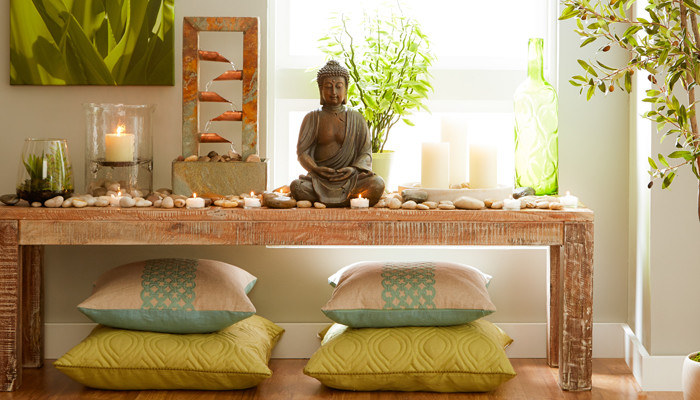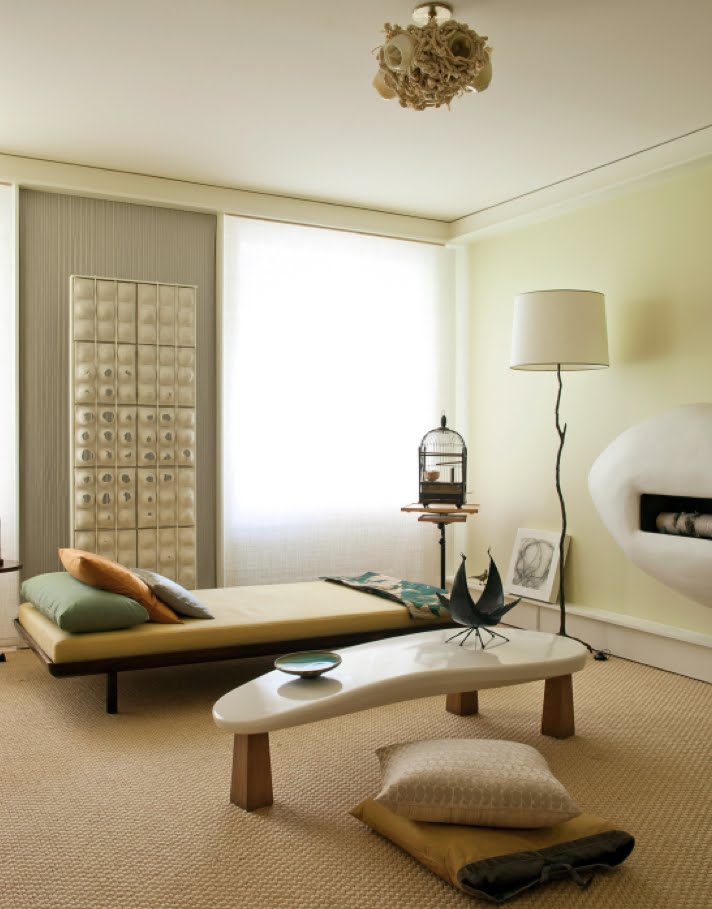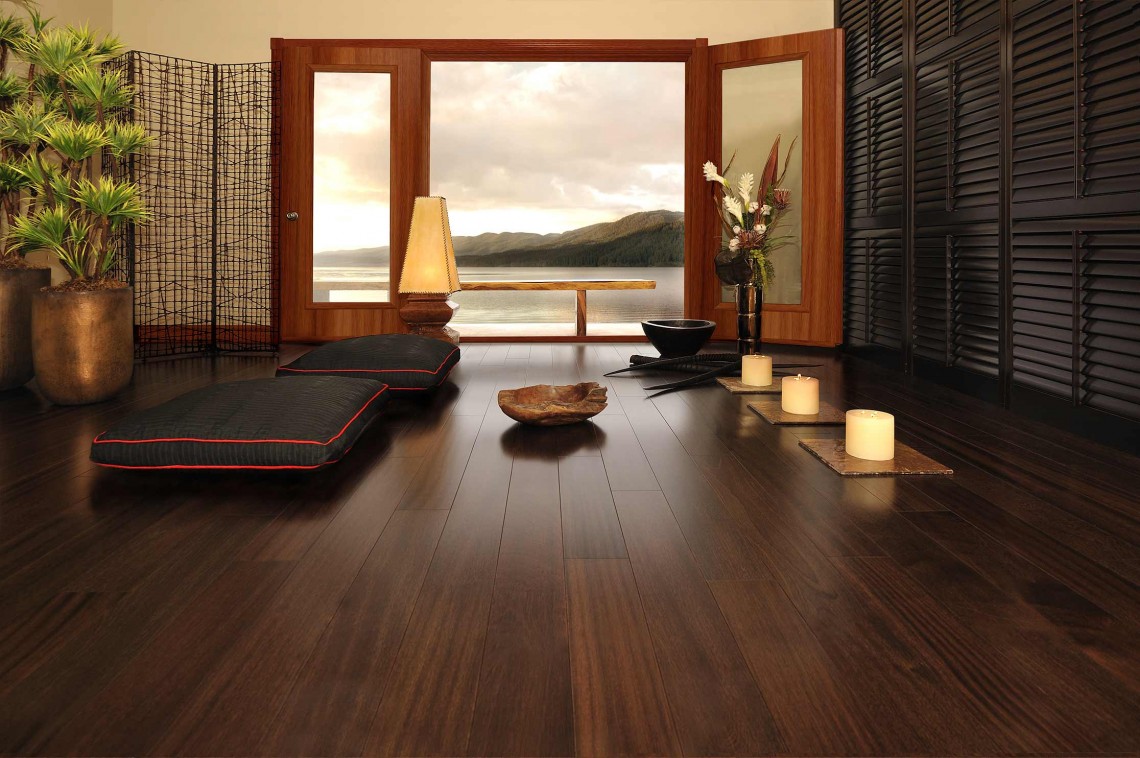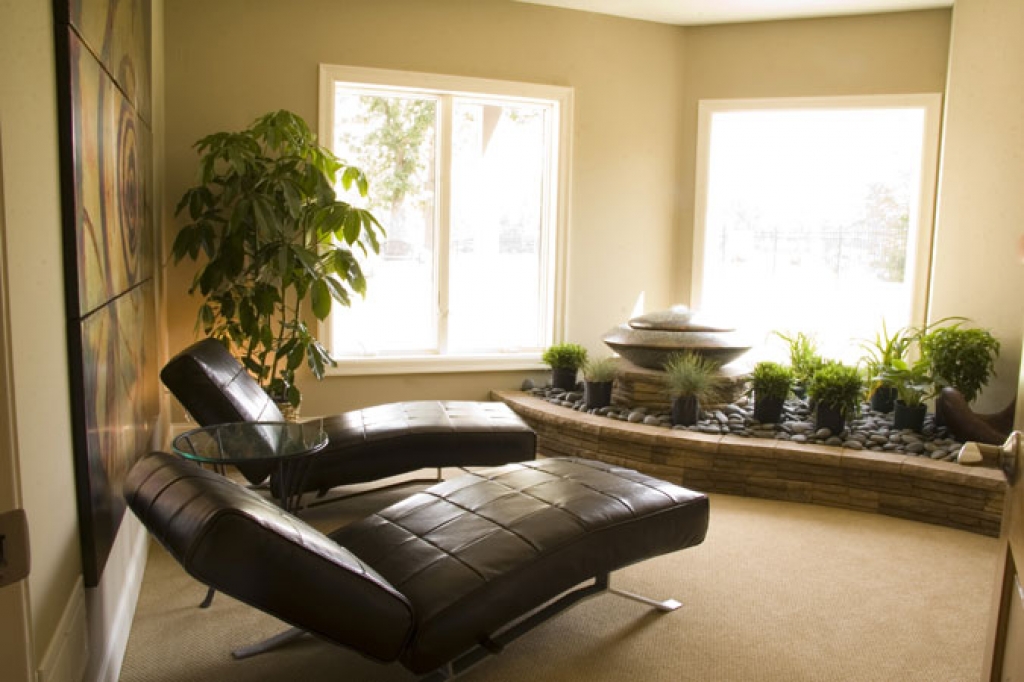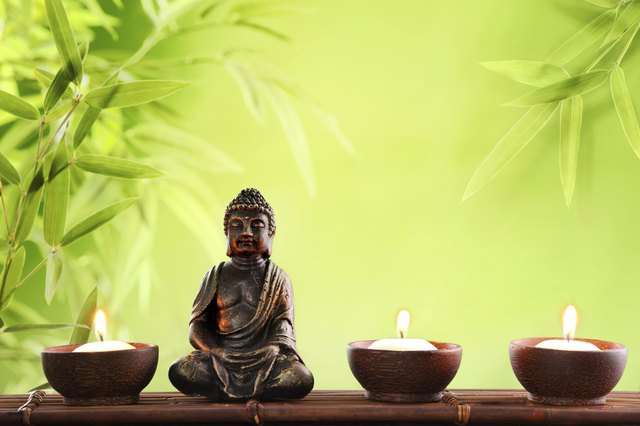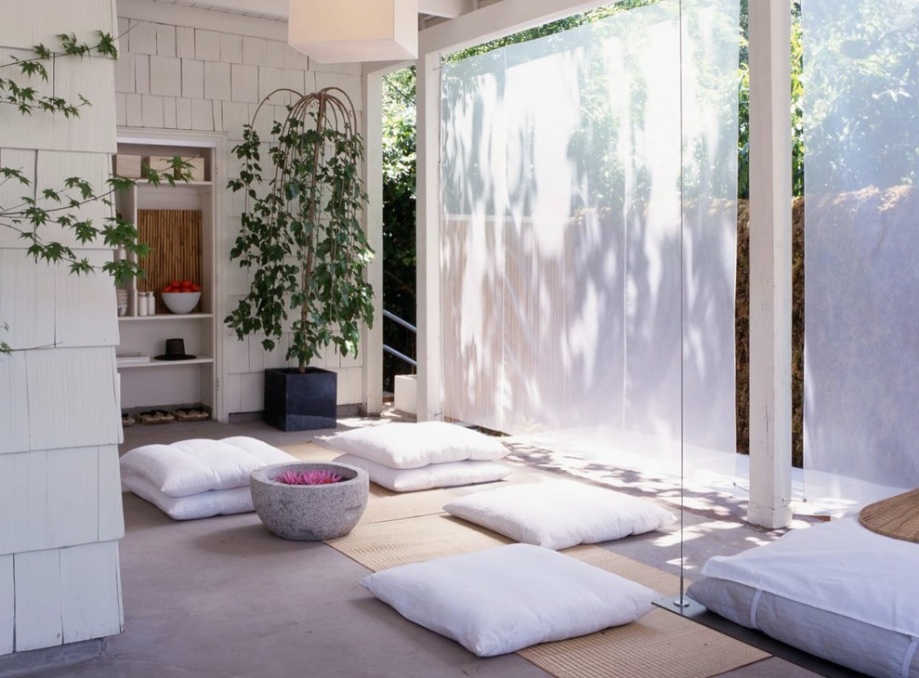Meditation has become an increasingly popular practice for improving mental and emotional well-being. Many people are now looking for ways to incorporate meditation into their daily routine, and what better place to do it than in the comfort of your own home. If you don't have a designated meditation room, don't worry. You can easily create a peaceful and calming space in your living room. Here are some tips on how to make your living room a sanctuary for meditation.Creating a Meditation Space in Your Living Room
The first step in creating a meditation space in your living room is to think about the overall design and atmosphere of the room. Neutral colors like soft blues, greens, and earthy tones are ideal for creating a sense of calm and relaxation. Avoid bright and bold colors that may be distracting. If possible, try to have natural light in the room as it can help create a peaceful ambiance. You can also add soft lighting such as string lights or candles for a more calming effect.How to Design a Relaxing Living Room for Meditation
One of the most important elements of a meditation space is comfort. You want to be able to sit comfortably for an extended period of time without feeling any physical discomfort. Invest in a comfortable cushion or meditation pillow that supports your back and allows you to sit in a crossed-legged position. You can also add a cozy throw blanket for added comfort and warmth. Make sure to have enough space to move around and stretch if needed.Transforming Your Living Room into a Meditation Room
Your living room decor can also play a significant role in creating a peaceful and relaxing space for meditation. Plants are great for bringing a touch of nature into your living room and can also help purify the air. Consider adding succulents, peace lilies, or snake plants for added greenery. You can also hang up inspirational quotes or artwork that promote mindfulness and positivity.Incorporating Meditation into Your Living Room Decor
Aside from the physical aspects, there are also some other things to consider when creating a meditation space in your living room. Decluttering and keeping the space clean can help create a sense of calm and reduce distractions. You can also play soothing music or nature sounds in the background to help you relax and focus. Another tip is to set a timer for your meditation session if you're new to the practice. This can help you stay on track and prevent you from constantly checking the time.Tips for Creating a Peaceful Living Room for Meditation
Feng Shui is an ancient Chinese practice that focuses on the arrangement and flow of energy in a space. By incorporating feng shui principles into your living room, you can create a harmonious and balanced environment for meditation. Some tips to consider include positioning your meditation cushion facing east, which is believed to be the direction of the rising sun and symbolizes new beginnings. You can also place a small water element such as a fountain or a bowl of water in the room to represent the flow of energy.Using Feng Shui to Create a Meditation Space in Your Living Room
If you have a small living room, don't worry, you can still create a meditation space. Consider using a corner of the room as your designated meditation area. You can also use a folding screen or room divider to create a separate space for meditation. Another idea is to hang up a tapestry or curtains to create a cozy nook for meditation.Meditation Room Ideas for Small Living Rooms
Zen design is all about simplicity, minimalism, and creating a sense of calm. If you want to transform your living room into a zen-inspired space for meditation, start by decluttering and keeping only the essentials. Use natural materials like wood, bamboo, and cotton for furniture and decor. You can also incorporate natural elements like rocks, crystals, and candles to bring a sense of grounding and serenity to the room.Designing a Zen Living Room for Meditation and Relaxation
The key to creating a meditation space in your living room is to make it a place where you can truly relax and disconnect from the outside world. Make sure to turn off or silence your phone and any other potential distractions. You can also use essential oils or incense to enhance your meditation experience and create a calming aroma. Remember, your living room may serve multiple purposes, so it's essential to set boundaries and designate specific times for meditation to maintain its peaceful atmosphere.How to Make Your Living Room a Sanctuary for Meditation
Lastly, remember that your living room is not just a space for meditation but also a place for daily mindful practices. Make it a habit to take a few minutes each day to sit in your designated meditation area and focus on your breathing. You can also use this space for other mindfulness activities like journaling, stretching, or practicing gratitude. By incorporating mindfulness into your daily routine, your living room can truly become a sanctuary for relaxation and self-care.Creating a Mindful Living Room for Meditation and Mindfulness Practice
Why Every Home Should Have a Meditation Room Living Room

The Benefits of a Meditation Room Living Room
 In today's fast-paced world, finding inner peace and relaxation can be a challenge. This is why incorporating a
meditation room
into your
living room
design is a wise choice. Not only does it add a unique and calming touch to your home, but it also offers a variety of mental, emotional, and physical benefits.
One of the main benefits of having a
meditation room living room
is the ability to have a designated space for your meditation practice. This allows you to have a quiet and peaceful environment free from distractions, making it easier to focus and relax. It also provides a designated space for you to retreat to whenever you need a moment of peace and solitude.
In today's fast-paced world, finding inner peace and relaxation can be a challenge. This is why incorporating a
meditation room
into your
living room
design is a wise choice. Not only does it add a unique and calming touch to your home, but it also offers a variety of mental, emotional, and physical benefits.
One of the main benefits of having a
meditation room living room
is the ability to have a designated space for your meditation practice. This allows you to have a quiet and peaceful environment free from distractions, making it easier to focus and relax. It also provides a designated space for you to retreat to whenever you need a moment of peace and solitude.
Creating a Tranquil Space
 Incorporating a
meditation room living room
into your home design is also a great way to add a touch of tranquility to your living space. By choosing calming colors, such as soft blues or greens, and incorporating natural elements like plants and natural light, you can create a serene and peaceful atmosphere. This will not only benefit your meditation practice but also create a peaceful and welcoming environment for you and your guests.
Incorporating a
meditation room living room
into your home design is also a great way to add a touch of tranquility to your living space. By choosing calming colors, such as soft blues or greens, and incorporating natural elements like plants and natural light, you can create a serene and peaceful atmosphere. This will not only benefit your meditation practice but also create a peaceful and welcoming environment for you and your guests.
Improved Mental and Emotional Well-Being
 Meditation has been proven to have numerous mental and emotional benefits. By having a
meditation room
in your
living room
, you have a convenient and accessible space to practice mindfulness and reduce stress and anxiety. It can also help improve focus, clarity, and overall emotional well-being. With a designated meditation space in your home, you can easily incorporate a daily practice into your routine and reap the many benefits it offers.
Meditation has been proven to have numerous mental and emotional benefits. By having a
meditation room
in your
living room
, you have a convenient and accessible space to practice mindfulness and reduce stress and anxiety. It can also help improve focus, clarity, and overall emotional well-being. With a designated meditation space in your home, you can easily incorporate a daily practice into your routine and reap the many benefits it offers.
A Unique and Functional Design
 Not only does a
meditation room living room
offer numerous benefits, but it also adds a unique and functional element to your home design. It allows you to utilize an often underutilized space in your living room and transform it into a peaceful and purposeful area. Whether it's a corner of your living room or a separate room entirely, a
meditation room
can add a touch of individuality to your home.
In conclusion, incorporating a
meditation room living room
into your home design is a simple yet beneficial addition. It not only adds a unique and tranquil touch to your living space but also offers a variety of mental, emotional, and physical benefits. So why not create a designated space for relaxation and mindfulness in your home and see the positive impact it can have on your overall well-being.
Not only does a
meditation room living room
offer numerous benefits, but it also adds a unique and functional element to your home design. It allows you to utilize an often underutilized space in your living room and transform it into a peaceful and purposeful area. Whether it's a corner of your living room or a separate room entirely, a
meditation room
can add a touch of individuality to your home.
In conclusion, incorporating a
meditation room living room
into your home design is a simple yet beneficial addition. It not only adds a unique and tranquil touch to your living space but also offers a variety of mental, emotional, and physical benefits. So why not create a designated space for relaxation and mindfulness in your home and see the positive impact it can have on your overall well-being.






